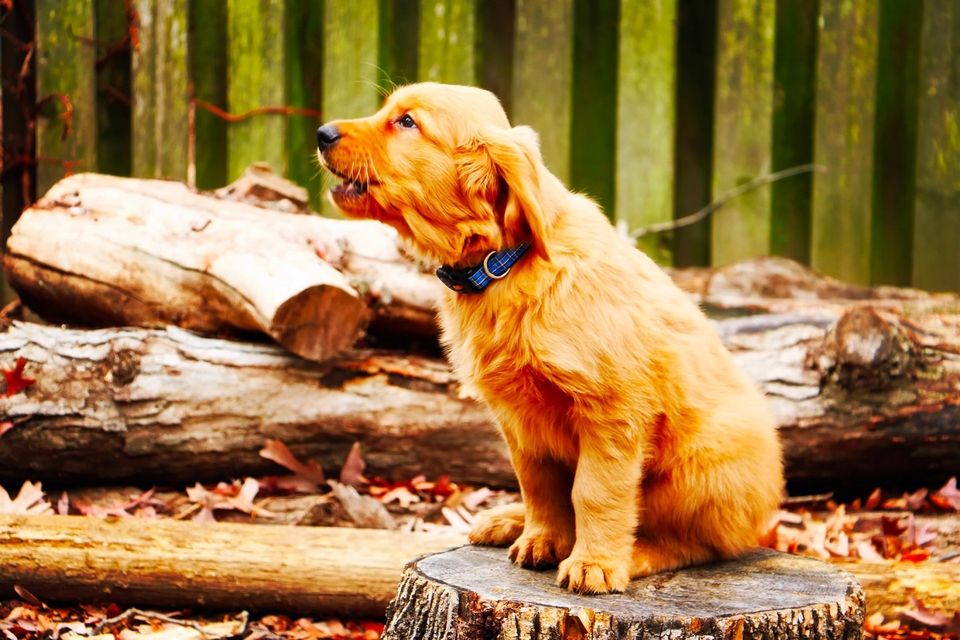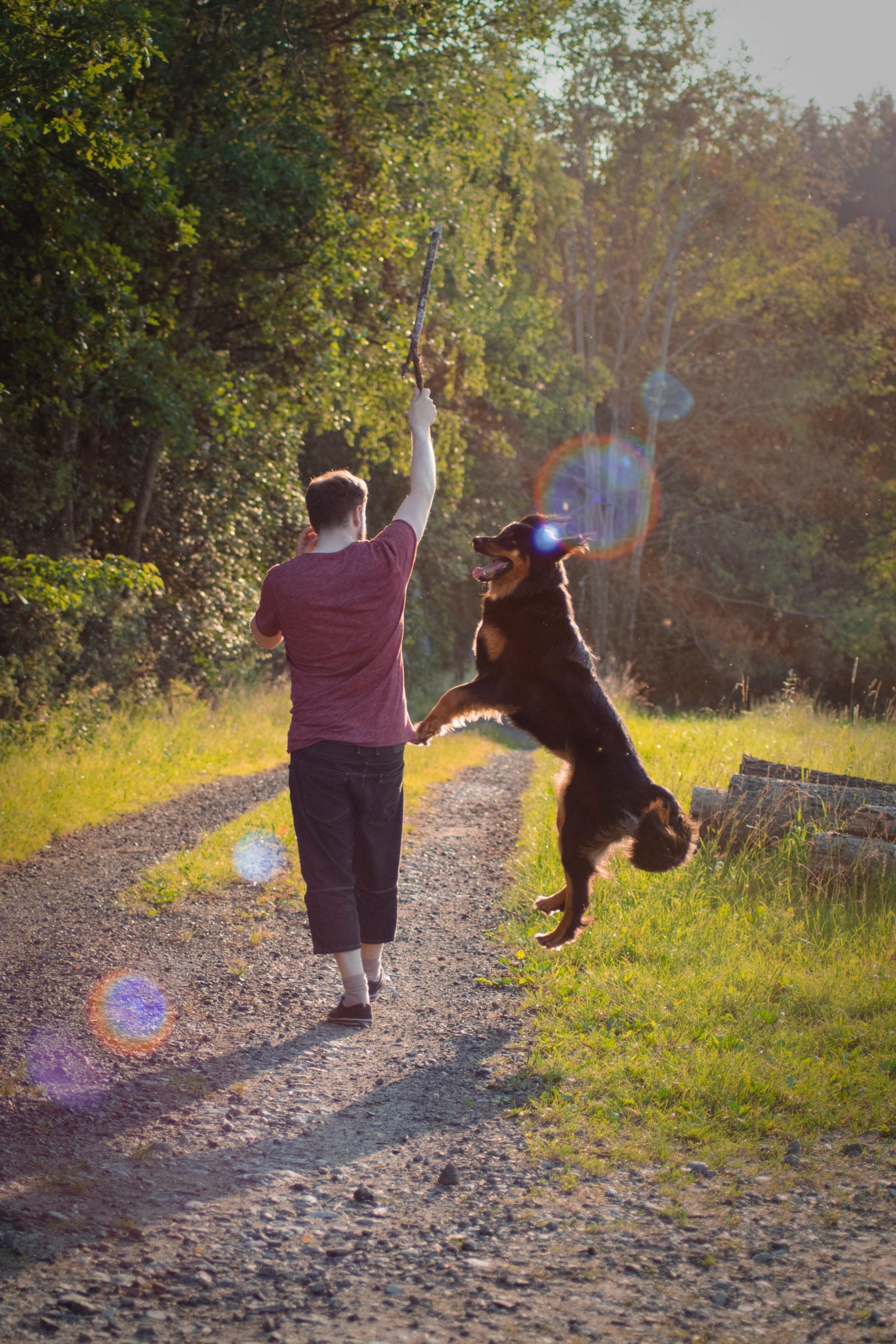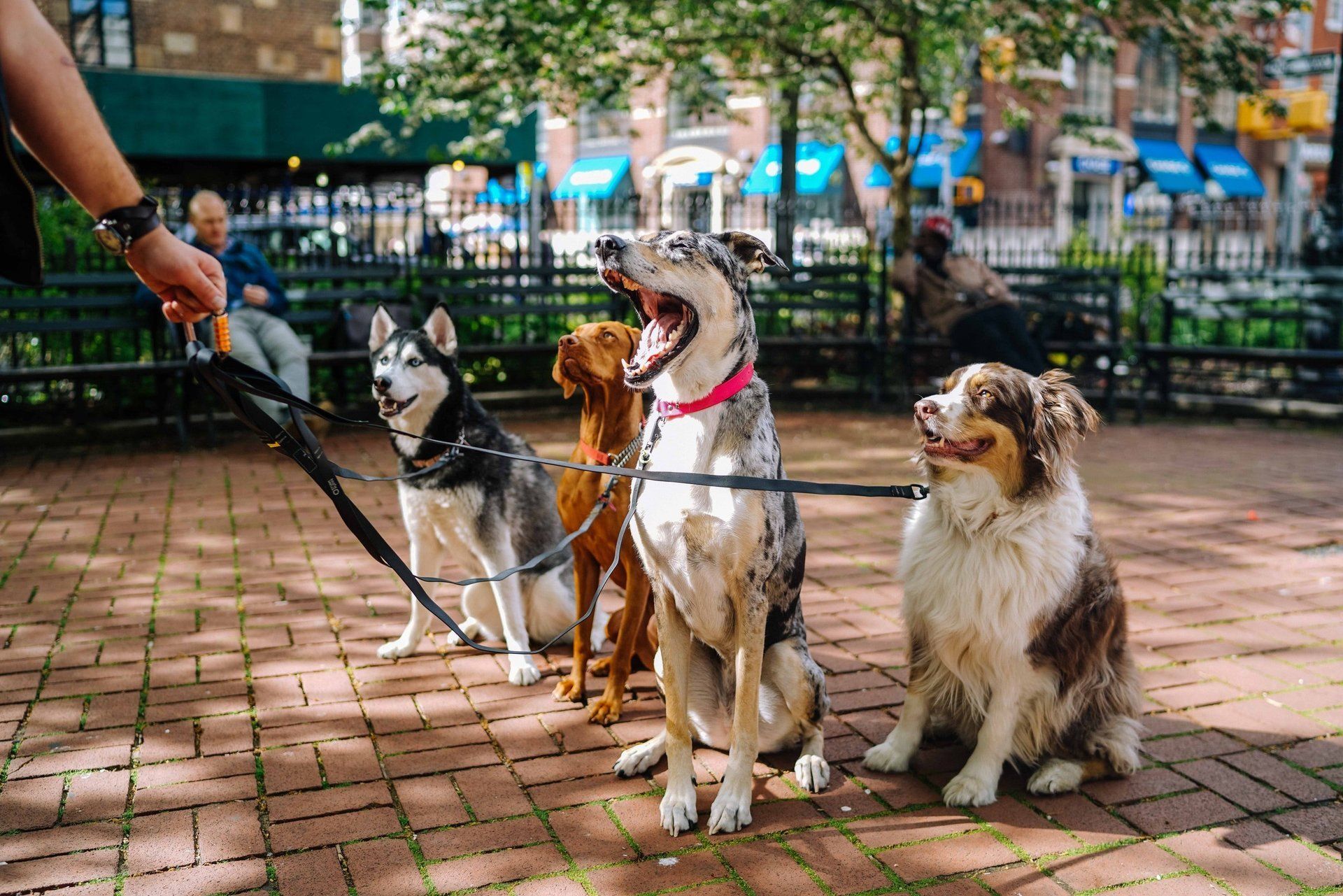Why Dogs Bark
technical • April 28, 2019
Why Dogs Bark

Barking can be a challenge for responsible San Francisco dog owners. Not to mention their neighbors. Especially in the South of Market (SOMA) and South Beach neighborhood where there's a concentration of people, and dog's, in high rise condo buildings. An excessively vocal dog can cause stress among neighbor relations, restrictions on living with pets through Owner rules and regulations, and even eviction for renters.
Let's review some reasons why dog's bark:
- Watch dog barking - serves the dual purpose of alerting pack members that there is an intruder and warning the intruder that they have been noticed.
- Request barking - is the dog's way of communicating to the owner that he would like something NOW. Typical requests are, "open the door NOW," "pay attention to me NOW," "let me out of here NOW," "I want to see that dog NOW" etc. Get the idea?
- Spooky Barking - occurs when the dog is uncomfortable about something in the environment and barks to say "I'm dangerous! Don't come any closer!" You'll often see smaller dogs with this type of behavior issue.
- Boredom Barking - can result when the dog's daily needs for exercise and social stimulation are not met. The dog's emotional needs are not being met, and misbehave as a result of boredom.
Controlling Excessive Barking
Watchdog Barking
-The standby technique is to teach the dog a competing response-such as fetching a certain toy or doing a down-stay on a mat (which cuts barking in many dogs) for tasty food rewards. Practice out of doorbell or "intruder" contexts first and then incorporate the game or command into real-life situations. The dog will need some coaching and prompting the first few times in the real-life situation so prepare to budget some time for that. Even better, set it up with a cohort to play "visitor," so you can focus on the dog rather than being forced to attend to the person at the door. When the dog is more advanced, you can also incorporate penalties. If he gets it right, he is rewarded as usual. If he barks, he goes into the penalty box or time out. A back room or crate that is far from the action, but be careful not to make the crate the dog uses for comfort into a punishment place.
Another technique
- high effort but great result- is to teach the dog the meaning of the words "bark" and "quiet" (or any word you want to use as an "off" switch). First, you have to teach the dog to bark and quiet on command as a trick. To elicit the barking so that you can practice, you must use something you know makes the dog bark, like the doorbell or a weird noise outside (you may need a helper). Arrange the following sequence:
1. Your command "bark!"
2. The doorbell or other prompt
3. Barking from the dog
4. Praise from you: "good bark!"
5. Your command "quiet"
6. Showing him the treat
7. His (eventual) distraction from barking by the treat
8. 3-5 seconds of quiet during which you praise "goooo-oooood quiet"
9. Giving him the treat after 3-5 seconds of perfect quiet
10. Repeat, gradually lengthening the duration of the "quiet" up to a minute
Do it over and over until the dog knows the game. He knows the game when he barks on the command and doesn't need the doorbell anymore, and he quiets on the first quiet command without having to be shown the treat (you still give him one from your pocket, you just don't show it anymore). If ever he interrupts a quiet with even one bark, say "oh! Too bad" and start counting the quiet time from the beginning again. Barking during the quiet time will cost him his treat.
You must be able to yo-yo the dog back and forth reliably between bark and quiet before you try out your "quiet" command in real situations. The most common mistake is trying to use the quiet command before it's well-enough conditioned in training sessions. Think of quiet on command as a muscle you're making stronger.
When you can turn barking on and off anytime, anyplace as a trick, you may now start commanding quiet after a few barks when your dog barks on his own in real-life situations. The first few times the dog will respond poorly to the command. Don't give up. Have really good treats handy. Go back to showing him the treat up front the first few times. Practice makes perfect.
If your dog "goes off" for the smallest sounds and changes in the environment, it would help the cause to get him better habituated. Take him out more, invite people and dogs over to socialize, expose him to a wider range of sights and sounds.
Request Barking
When they want something, dogs will experiment with various behaviors to see if any of them work. They quickly figure out that barking works with their owners. If you don't like barking, stop rewarding it with attention, door-opening services, releasing from crates etc. Period. No buts.
Rather than the dog telling you when to take him out, take him out at regular intervals; making sure barking precedes none of them. Don't let a barking dog out of a crate until he's quiet. Ignore dogs that bark at you. Keep in mind that if you have been rewarding it for a while, the barking will get worse before it goes into extinction. You're changing the rules and the dog will be frustrated at first. Whatever you do, don't crack and reward the WORSE version of the barking!
Above all, start noticing the dog when he's quiet. Teach him that there are payoffs for lying quietly, chewing on a chew-toy and refraining from barking.
Barking When Alone
This is a common form of request barking: the dog is requesting that you come back. There is also often some anxiety involved. When you get a new dog or puppy, set a good precedent right away. Don’t smother him with your constant presence and attention. Come and go a lot and never go to him when he's vocalizing. Wait until he's quiet for at least 30 seconds so you don't risk rewarding the noise making. If your dog already has a habit, you must start a multi-pronged assault:
1.) When you're at home, don't let him shadow you around: lock him in various rooms away from you to practice "semi-absences." Reprimand or ignore any barking (ignoring is actually a more powerful tool). If you choose to reprimand it, burst through the door, scold the dog and then immediately disappear again, closing the door behind you. Remember that he's barking to get you back: with some dogs, a reprimand is better than nothing so you may be rewarding him
2.) Practice absences every day. Go out and come back in after 2 or 3 seconds over and over to get the dog desensitized to your departures. Do it in a matter of fact way, more or less ignoring the dog whatever he does. Then do outings of 10 seconds, 30, a minute, etc. Mix it up. Dogs whom are anxious need to learn that your departure doesn't usually mean a traumatically long period of isolation. Keep all your departures and arrival greetings low key. Never enter when the dog is barking. Wait for a lull of at least 30 seconds.
3.) Dogs are a highly social species. They don't cope well with prolonged isolation. Consider a second dog, daycare or dog-walker at lunchtime if you work all day.
4.) Increase physical and mental stimulation. In a natural environment, a lot of your dog's energy would be spent acquiring his food. He would have to find prey, run it down, hang onto and kill it and then rip it apart to eat it. He'd have to attempt several finds and run-downs before he successfully made a kill. That's work!
Tire him out before long absences. Walks don't cut it as exercise for dogs. Most dogs like getting out and checking out the environment but it's not exercise. Exercise means exertion. Start working your dog out with high-intensity games like ball-fetch, Frisbee, tug-of-war, hide & seek, free-play with other dogs etc. Again, dog day care, like that of K9 Playtime, is an excellent form of exertion as the dog spends hours every day in the games mentioned above.
Make him work to acquire his food. Hide it around the house, scatter it in the grass in the backyard, make him extract it from the hollow inside of a bone or Kong toy (which you also hide), make him earn it piece by piece for obedience exercises or tricks, make him solve problems. Your imagination is the limit. Make your absences predict that his meat is hidden around the house so that he has to get busy when you leave if he wants to eat. Dogs are programmed to work for their food. It's no wonder there are so many problems related to under-stimulation.
5.) Get him more focused on toys. When you play with him, incorporate toys. Hold chewies for him. Teach him to find a toy that you've hidden in the room and then celebrate his find with tug of war or fetch. Teach him his toys by name. Ask him to bring you one when you come home. Don't greet him until he's brought it. Then have a vigorous game of fetch. Leave him stuffed chew toys during absences: fill hollow bones or Kong’s with Kong filler, cheese, cookies, …or combinations.
If your dog is anxious to the point of panic attacks, he has separation anxiety and need formal training / desensitization and or medication. Feel free to contact us at K9 Playtime to discuss training options.
Spooky Barking
In this case, it is important to get at the underlying under-socialization. Socialize puppies extensively to as wide a variety of people and dogs as possible. You cannot overdo it. Expose them to plenty of places, experiences, sights & sounds and make it all fun with praise, games & treats. Find and attend a good puppy class. K9 Playtime provides a safe environment for your family’s new addition, in our puppy day care.
If you missed the boat socializing your puppy, you'll have to do remedial work with your adolescent or adult dog. Whatever it is that your dog is spook-end about must now become associated with food / reward. This is how under-socialized dogs work for their food. If he doesn't like strangers, meals need to feed bit by bit around strangers until he improves. It takes a while to re-socialize adults so stick with it.
Boredom Barking
If you don't have time for a dog, please don't get a dog. Dogs are not space-intensive, they are time-intensive there is no quick fix here: you must meet your dog's basic needs for stimulation, exercise and companionship. Remember, dogs are very social, pack–oriented animals, and can be emotionally disturbed when not fairly stimulated and socialized. This is where poor and destructive behaviors can develop. K9 Playtime Dog Day Care provides high quality dog care for your pup. We provide a balance of exercise, stimulation, attention, and affection in a safe, clean, and fun environment while you’re busy at work. Feel free to call us at 415-796-2245, if you have any questions, or if we can help you with any Barking challenges you’re facing.
If you don't have time for a dog, please don't get a dog. Dogs are not space-intensive, they are time-intensive there is no quick fix here: you must meet your dog's basic needs for stimulation, exercise and companionship. Remember, dogs are very social, pack–oriented animals, and can be emotionally disturbed when not fairly stimulated and socialized. This is where poor and destructive behaviors can develop. K9 Playtime Dog Day Care provides high quality dog care for your pup. We provide a balance of exercise, stimulation, attention, and affection in a safe, clean, and fun environment while you’re busy at work. Feel free to call us at 415-796-2245, if you have any questions, or if we can help you with any Barking challenges you’re facing.
BLOG

Responsible Dog Care in San Francisco includes teaching dogs to be good "citizens". Jumping on strangers as they are walking by you on the street/sidewalk is often un-welcomed behavior, and can be greatly disturbing to many. And it can be embarrassing to the owner (on the other hand, if you're single, it's a great way to meet people – joking!). K9 Playtime seeks to help dog owners create good dog "citizens" so San Francisco, and more specifically, the SOMA – South Beach neighborhood, remains a dog friendly neighborhood. Here are some exercises to reduce jumping:

Responsible Dog Care in San Francisco includes safe and obedient leash control. Not only is it responsible dog ownership to ensure your dog walks appropriately on the sidewalks of San Francisco, but it can also save his or her life. With all the busy traffic, buses, above ground trains, bicyclists, … a dog that is not properly leash controlled can find themselves in situations that are dangerous for him and his owner. At K9 Playtime Doggie Daycare, we work with the dogs that have leash control issues throughout the day to reinforce "good citizenship" behavior. We're happy to help you with any dog training challenges you have. Our goal is help you have a happy, peaceful, and enjoyable home life with your dog, and create good four-legged citizens for San Francisco. That said, does your dog pull when walking on leash? Well consider this. It's not just your dog! It takes two to pull! Dogs do not pull if there is no one dangling at the end of the leash! Both you and your dog need to break old habits. Your dog pulls because someone, somewhere at some time, took a step when he put tension on the leash. He continues to pull because it continues to be a rewarding experience. He pulls, and he gets to the car. He pulls and he gets to greet that other dog in the street or park. He pulls when the neighbor lady across the street tells him how lovely he is, even though he is now not just pulling but is also climbing up the front of her with his muddy dog paws, to which she replies, "it's ok, I don't mind!" REMEMBER, what gets rewarded, gets repeated. Here is the elusive answer to the ever-present question of: HOW DO I TEACH MY DOG NOT TO PULL??? Don't walk forward if there is tension on the leash. When the dog is about to apply ANY tension to the leash at all.....Immediately stop. Be a tree. When the dog turns to see what happened to you, praise for his attention and encourage the dog back into heel position next to you-if necessary, take a few steps backwards. As long as the dog is in the magic spot next to your leg, continue praising, give food rewards, make it the best possible place in the world to be. If he loses concentration and is about to put any tension on the leash at all, stop without warning and repeat the above sequence. Sounds way too simple doesn't it? Simply STOP every single time you note that the dog is about to put the slightest tension on the leash and the pulling will go away. (Yeah, right.) No, honest. It really, really works! The truth is, that if you tire your dog out first with a good game of fetch and then take him for a walk in a quiet non-distracting place every day this week with only ONE goal: to walk without tension and you absolutely refuse to take a single forward step when you feel tension on the leash, he will discover that pulling is "broken" and that the tension is a clue to slacken the lead. You will see the light bulb go on when he realizes this. If you are consistent and don't give up, he will learn it. He will have good days and bad, but if you are diligent he will figure it out. The other problem is that YOU want to get where you are going as much as your dog does. Responding to your dog's pull has been rewarding to you, too. You are probably thinking right this instant: "How will I ever get to the car, the park, the house, by standing still for heaven's sake"? First we must break YOUR habit!! It is as much an ingrained habit to you as it is your dog. He cues you to take that step by putting tension on the leash and you dutifully obey. He has trained you to respond and you are fluent in the art of following his lead. You do it without thinking. He pulls without thinking. Be Consistent!!! Don't have a great training session and have super results and then mess it up and undo all the hard work you've done by allowing your dog to drag you to the car when you are late to class. (YOU MUST NEVER MOVE FORWARD WHEN THE LEASH IS TIGHT)!! Put all your supplies in the car first so you aren't juggling your purse, your training supplies, … and can concentrate on your dog. Do one step sit, one step sit, one step sit all the way to the car if necessary, but DO NOT allow your dog to drag you where he wants to go. LET GO OF THAT LEASH- it will keep you from pulling!! Noooo that doesn't mean turn your dog loose to run in traffic, TIE THE LEASH SECURELY TO YOUR WAIST OR STRONG BELT or better yet, use a waist leash, and go hands-free. This will keep you from pulling. The only thing in your hand is your food reward or a favorite toy hidden in your pocket. These items will be delivered when the dog makes the right choice. If you "feel" your dog decide not to pull, PRAISE AND REWARD lavishly!!!! Reward any lessening of the tension by proceeding forward. Deliver the reward at the seam of your pant leg as you step in next to your dog to reinforce that magic position. BACK AND TO THE RIGHT. What if you stop and he just keeps pulling? Stop for a couple of seconds and wait, if your dog continues to strain like a maniac, turn abruptly and walk away from your dog (imagine you are facing 12 on the clock, you are going to turn and head for 4 o'clock.) The diagonal direction will set him off balance and he will turn toward you, as he catches up, PRAISE and deliver a treat in heel position--next to the seam of your pant leg. (This assumes that the dog is walking on your left side. If he is on your right, you will turn and head for 8 o'clock.) Then continue on your way. THE FIRST COMMAND OF LEASH TRAINING: -DO NOT PROCEED FORWARD IF YOUR DOG IS APPLYING TENSION TO THE LEASH!!! -DON'T GIVE YOUR DOG ANYTHING TO LEAN AGAINST. -THE MORE TENSION YOU APPLY TRYING TO HOLD YOUR DOG BACK, THE MORE HE SHIFTS HIS WEIGHT FORWARD TO COMPENSATE. KEEP THE LEASH SLACK!


